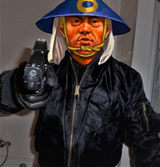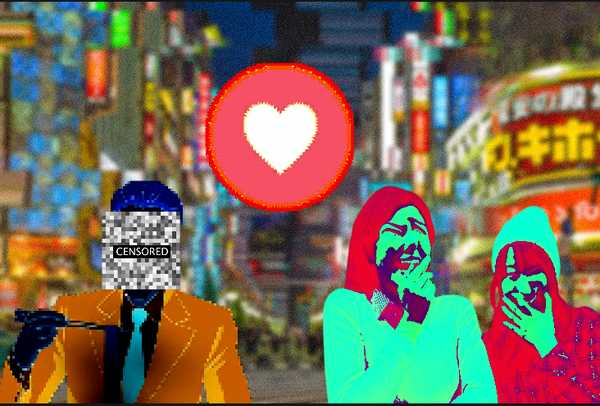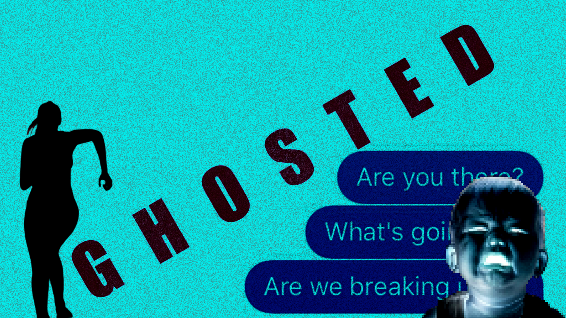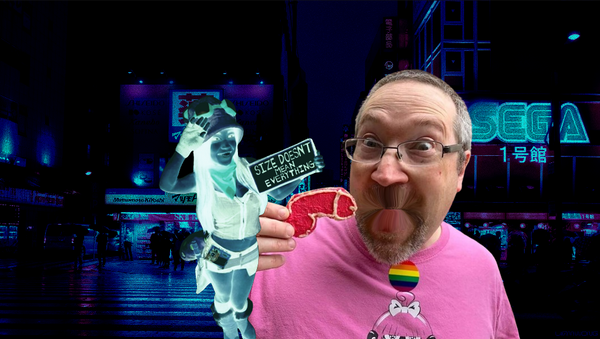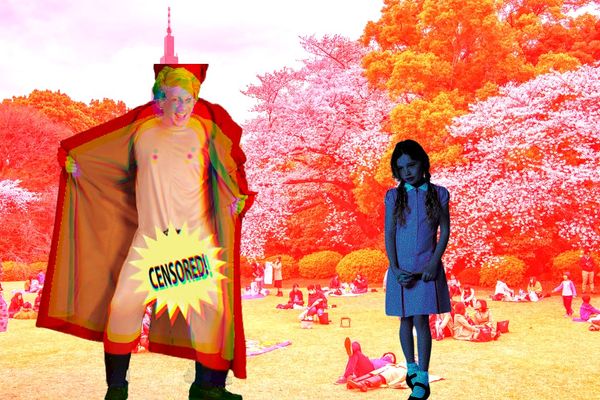A Look At Japanese Cholo Culture From Lowriders To Rappers

The Japanese have adopted cholo culture since the ’90s. How, why, and isn’t it cultural appropriation? In this article, we talk about it all – read on to unravel them.
If you’re familiar with the image of mid-90s East L.A., you’ll know it’s the typical lowriders cruising down the streets or parked along the sidelines in rows, and next to these customized cars are tattooed men in white shirts with caps that have the emblem of the Los Angeles Dodgers. Sometimes, they’re accompanied by ladies similarly dressed, and might or might not have swapped out the cap for a bandana.
Imagine that exact image but in Japan. Yep, the Chicano culture from the States has somehow made its way to The Land of the Rising Sun, and those who look similar to them aren’t Mexican Americans at all – they’re all 100% Japanese!

What Is A Chicano Or Cholo?
Before we get into it, let’s first take a look at what actually is Chicano and cholo culture — its history is quite important to why some people are reacting the way they do to Japanese adaptation of cholo culture.
Chicano or Chicana, refers to people who are native or has descendants from Mexico and live in the United States. A lot of the time, Mexican Americans would choose the identity of a Chicano or Chicana in the U.S.

During the 1960s, there was a social and political stance known as the Chicano Movement — inspired by acts of resistance among descendants of Mexican immigrants in the 40s and 50s as well as the Black Power movement of the 60s. The Chicano Movement worked towards not only embracing the Chicano identity and achieving empowerment, but also combating structural racism and rejecting assimilation.
Now, what about a cholo or chola? We first have to go back far in history — to 1609, to be exact. There was Peruvian text, written by Inca Garcilaso de la Vega, that used the word for the very first time in history. In the Spanish-written book, called Comentarios Reales de los Incas, there was a quote:
“The child of a Black male and an Indian female, or of an Indian male and Black female, they call mulato and mulata. The children of these they call cholos. Cholo is a word from the Windward Islands; it means dog, not of the purebred variety, but of very disreputable origin; and the Spaniards use it for insult and vituperation”.
Since then, the term cholo and chola were used quite often to talk about various mixes of ancestry like Mestizo and Amerindian in Latin America. The Anglos caught onto the term after Herman Melville’s 1851 novel Moby-Dick. In the book, he used the term to refer to a Spanish-speaking sailor. Appropriate or not — I’ll let you decide.
In 1907, the term popped up again in the Los Angeles Express with a headline that says, and, I quote: “Cleaning Up the Filthy Cholo Courts Has Begun in Earnest”. Anyone in the right mind would automatically take the term “cholo court” as a negative even without knowing its meaning (it referred to the poor areas where the Latinos lived) — so then began the negative association with the term. Many used the term to talk about Mexicans or Latinos they looked down on.
Things looked up in the '60s when the term was reclaimed by Chicano youths, used during the Chicano Movement as a way to express Chicano pride and identity. More recently, the term is associated with Mexican American gang subculture.

The Cholo And Chola Image
With every subculture, there’s usually a whole style attached to it. As the cholo subculture came from the street gang barrios of Southern California, their style's turned naturally more casual and edgy.

More often than not, you'll see cholos wearing a combination of tartan, flannels, oversized t-shirts or tank tops, a bandana around their head, or a baseball cap paired with baggy chinos or jeans. They'll usually top it all off with accessories like dark sunglasses, gold chains, and even a ton of tattoos. That's basically the look of a cholo. Comfy and loose with a dash of edge.

A chola, which is the female counterpart of a cholo, would usually carry the same image more or less. They're known to exhibit "radically criminalized feminity" and ooze a bit more sexiness than a cholo. It's like saying "Hey I'm a woman and I can wear whatever I want." I'd say that sounds a lot like feminism.
To top it all off, the cholo subculture is always associated with lowriders — thanks to the Chicanos redesigning cars back in the 1940s as part of their political statement to represent rebellion, resilience, and youth.

How Did Chicano Subculture Come to Japan?
While Chicanos and cholos had quite a history, the Japanese cholo culture is pretty new. There’s no one story that has proven to be the origins of Japanese cholo culture, but it’s said that a Japanese journalist traveled to Los Angeles in the early 1990s to cover a lowrider event. He came back fascinated by the culture and shared his experiences and pictures with people in Japan.
Others say that the culture started to become more popular in the late 80s to early 90s because of magazines like Lowrider Magazine. During this time, Japan was opening up more culturally to the outside world, and the Japanese people started to become more fascinated with anything not Japanese as the bubble economy ended.
People who traveled to L.A. and came back with a deep interest in the cholo culture decided to replicate its essence — in my opinion, the replication looks like the aesthetics with a sprinkle of cultural practices like cruising in lowriders.

Iconic Figures in Japanese Cholo Culture
With a country that is mostly homogeneous, it's a wonder how this subculture flourished with hundreds of followers. You might not notice immediately, but you are sure to run into one on the streets or a sick lowrider pass by.
The Japanese cholo culture is quite prominent in cities like Nagoya, Osaka, and, Tokyo. In each city, there are areas where you’ll see more of the community members around and shops to go to for L.A. imported products closely resembling the style they all wear.
Naturally, in each subculture, there are a couple of iconic figures and groups that are arguably the style leaders and role models of Japanese cholo culture. If you’ve ever come across The New York Time’s mini-documentary on this exact topic, you would’ve seen some of these icons featured in the video. Even Refinery29 made their own mini-documentary, focusing on Japanese Chola culture — purely female icons — instead.

Nagoya’s Low Rider’s Community
Just a two-hour drive away from Tokyo, Nagoya is home to Japan’s biggest lowrider community. The most well-known car club in town is the Pharaoh Car Club, founded by Japanese lowrider godfather Junichi Shimodaira. He has been active in the lowrider’s community for more than 30 years — practically the very beginning.
In fact, Shimodaira is also the owner of a customs and lowrider shop called Paradise Road, which started in 1987 — around the time the whole hype of lowriders came to Japan. In his shop, there are imported cars and car parts from the USA directly that make high-quality customization and construction of lowrider cars.
Shimodaira is one of the very few guys people in the Japanese cholo culture go-to for anything to do with this subculture and lowrider culture — he’s quite a role model that people look up to.
MoNa a.k.a. Sad Girl
One of the most popular Chicana-style rappers in Japan is MoNa a.k.a. Sad Girl. She’s not only popular in Japan but also worldwide — she’s had concerts in American cities like San Diego and the heart of Chicano culture, Los Angeles.
Her songs are very much holding the essence of Chicano/Chicana music, however, the lyrics aren’t all in Spanish — they’re a mix of Japanese, English, and Spanish. In a way, this is how Sad Girl is respecting the culture that she looks up to so dearly.
In both mini-documentaries, Sad Girl was interviewed, and in it, she mentioned that the reason why she was so interested in this subculture was that it gave her the freedom of expression and the escape of her own culture, where she never felt that she really belonged. Don’t we all feel like that sometimes?

Night Tha Funksta
We have both a Japanese Chicano pioneer and a Chicano-style musician known as Night The Funksta. His art style takes a different approach. Instead of drawing upon the stereotyped tropes of Chicano culture, he only talks about the positive aspects of it.
Everything from loyalty, bond, unity, and the importance of family, Night Tha Funksta spreads the word that this culture is not all about gangs and the likes. Instead, he emphasizes the connection between every member of the community.
Night Tha Funksta aims to capture all that positivity of this special culture in his art style — and people are loving and appreciating it.

Cultural Appropriation Or Appreciation?
In one of the mini-documentaries, a professor of Chicano Studies at CSU Northridge spoke about whether it’s cultural appropriation or not. She flat-out said it was, but then mentioned that the Japanese are “making their own meaning of it.”
Taking elements from another culture and adopting it as your own can be quite controversial, especially when the culture is regarded as a minority culture. Japan is no stranger to adopting another culture and making it their own — the Yoyogi Greasers is one to be named — but then is it cultural appropriation, or can you classify it as cultural appreciation?
In the mini-documentaries, you can tell that the members of this Japanese subculture really respect Chicano culture, and from their point of view, adopting elements of that is their way of showing appreciation and admiration — not at all insulting the other culture.
Their attention to detail is praiseworthy — some go all out to dress the part like getting tattoos to look like the real deal. It’s even more impressive when you think about the social costs of getting a tattoo in Japan — if you’ve read our article on Japanese tattoo culture, you’ll know that it’s not at all looked upon highly; it’s quite the opposite. Tattoos are associated with criminals and people who have them are limited to the places they’re allowed to go. For someone who is Japanese to sacrifice that, you've got to give them credit where it's due.
There’s also the mention of not belonging in both mini-documentaries — those that were interviewed stated that there was something about the Japanese culture that they couldn’t connect with, which led them to reach out to other things to feel like they’re a part of something. In the search, they found a home in the message and stances of the Chicano culture — feeling free and liberated from their own restrictive culture.
For women, it’s the rebellion of the submissive roles the Japanese culture prescribed to them. Women are to stay in the house, not work and obey their partners. In the mini-documentary about Japanese women dressing up like Chicanas, they all agree on one thing: they love the idea to be independent, strong, and liberated from these social rules. All the makeup and fashion was to showcase their admiration for the culture.
So with all that in mind, what do you think? Is it still cultural appropriation or is it cultural appreciation? Is the answer still black and white, or are the Japanese cholos and cholas playing around the grey area?
You Decide…
The Japanese cholo subculture set out to mean no harm— they’re merely finding freedom in another culture. The importance of family and social identity in Japanese culture is somewhat similar to Chicano culture, and maybe it’s because of that, the Japanese cholo could find solace in that. At the end of the day, it’s up to each individual to decide whether or not it’s cultural appropriation — but everyone is doing it these days; where does the line draw between appreciation and appropriation?

